
![]()
The Historic Monuments of Ancient Nara
The "Historic Monuments of Ancient Nara" include 6 temples: Todaiji, Kasuga-Taisha, Kofukuji, Yakushiji, Toshodaiji and Gangouji. Todaiji is a noteworthy example, visited by Japanese students on school trips and tourists from all over the world. This temple was built by order of Emperor Shomu (ruling from 724 to 749) in order to protect the country. The 14.7-meter-high Great Buddha in the Daibutsuden (Great Buddha Hall) symbolizes Nara, and his pose of holding up the palm of his right hand to the front while placing his left hand on his knee with the palm upwards means that he gives strength to the people with his right hand while promising to grant their wishes with his left. The main body of the Buddha has been repaired many times over the years, but the lotus petal part used as the foundation and both legs are as they were when first made. The building, reconstructed in the Edo era, is the largest-scale ancient wooden building in the world.
In addition to these wonderful things, each temple has many cultural assets designated as national treasures such as the Toutou (East Pagoda) of Yakushiji, the statue of Ganjinwajo in Toshodaiji, the Honden (Main Sanctuary) of Kasuga Taisha and the Tokondo (East Main Hall) and Goju-no-tou (Five-storied Pagoda) of Kofukuji, so there is no shortage of places to visit in a day. By the way, the "Kasugayama Primeval Forest" conserved by the unique Japanese belief in God and their view of nature, has also been registered as a world heritage site. (Japan Tourists Organization).
![]() Writing Practice
Writing Practice
Create sentences saying what you are going to give the following people on their birthday this year. Click to see the correct answer.
| はは(母) | ほん(本) | わたしは、ははに ほんを あげます。 (私は、母に 本を 上げます。) |
| きょうだい(兄弟) | ねこ(猫) | わたしは、きょうだいに ねこを あげます。 (私は、兄弟に 猫を 上げます。) |
| ともだち(友達) | CD | わたしは、ともだちに CDを あげます。 (私は、友達に CDを 上げます。) |
| にほんごのせんせい (日本語の先生) |
じしょ(辞書) dictionary |
わたしは、にほんごのせんせいに じしょを あげます。 (私は、日本語の先生に 辞書を 上げます。) |
| あなた |
けいさんき(計算機) calculator |
わたしは、あなたに けいさんきを あげます。 (私は、あなたに 計算機を 上げます。) |
| わたし(私) |
たくさんのふく (たくさんの服) |
わたしは、わたしに たくさんのふくを あげます。 (私は、私に たくさんの服を 上げます。) |
![]() More body parts
More body parts
Let's talk more about body parts. Read the phrases below and look at the picture to understand what is said in the phrase.
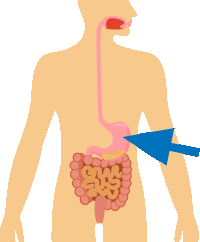 |
おとこのひとは、おなかが いたいです。 (男の人は、お腹が 痛いです。) |
 |
おとこのひとは、あたまが いたいです。 (男の人は、頭が 痛いです。) |
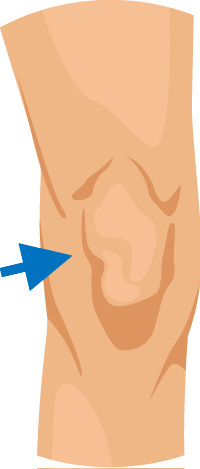 |
おとこのこは、ひざが いたいです。 (男の子は、膝が いたいです。) |
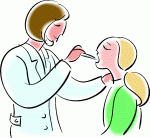 |
おんなのこは、のどが いたいです。 (女の子は、喉が 痛いです。) |
いたい(痛い) is the I-Adjective we use to talk about what hurts us. We use this with the body part that hurts (body parts が いたいです。). In the above examples, we are talking about the person, thus using topic particle は is used after the person. How would we say "Talking about Mary, her legs hurts"? メリーさんは、あしが いたいです。(メリーさんは、足が 痛いです。)
![]() Writing Practice
Writing Practice
Look at the person and the picture. Say that person has an ache or pain in that body part.
| わたし(私) | 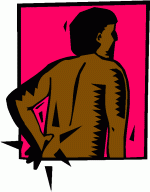 |
| わたしたち(私達) |  |
| ともだち(友達) | 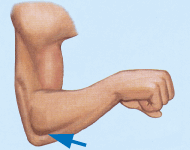 |
| ちち(父) | 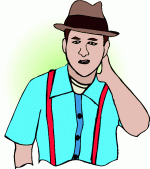 |
| おんなのこ 女の子 |  |
| あなた | 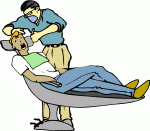 |
![]() Graded Assignments
Graded Assignments
Please return to the Section 1 Tasks & Assignments folder to complete the graded assignments for Section 1, Part D.

